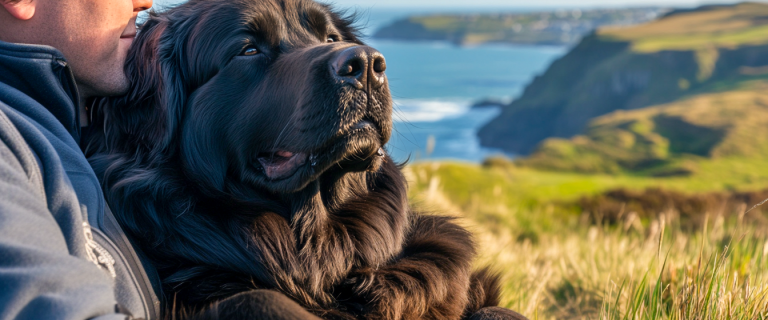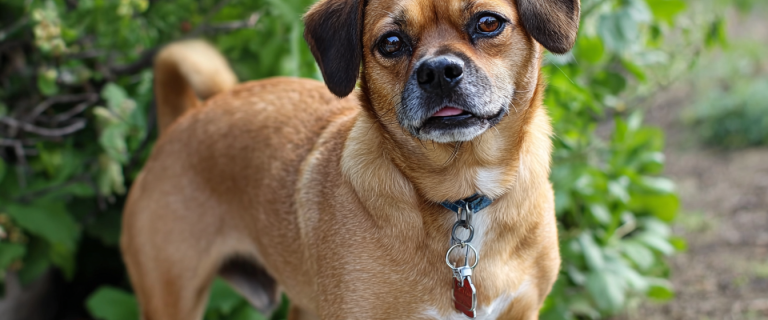If you’re looking for a loyal dog with a rich history of working side-by-side with humans, let me introduce you to the Alabai. Read on to learn about this protective breed, including its origins, personality, health profile, and more!

What is an Alabai?
The Alabai, also named the Central Asian Shepherd, Boribasar, Tobet, Chuponi, and the Central Asian Ovcharka is a fearless pooch with a high working capacity and nearly neverending endurance. While they’re not fully recognized by the American Kennel Club yet, as of 1996 they are registered in the AKC’s Foundation Stock Service.
While some say that they were traditionally a livestock guardian, others argue that this is a bit of a misclassification. Yes, they will guard sheep, goats, and other animals. However, they bond first with their people, making them better suited to act as a guard dog breed, watching over their people and their homes.
Because of their territorial protectiveness, the AKC does NOT recommend these powerful dogs for first-time owners. As they put it, the “Central Asian Shepherd Dogs are a natural protective breed that require a non-stop observance for the life of the dog.”
Let’s talk a bit about their fascinating history. Then we’ll get to know their personalities a bit better.
Alabai History and Origin
The Central Asian Shepherd likely originated in Central Asia around 5,000 years ago, at least according to artifact evidence. Some say they’re even older than that! The breed developed through natural selection in the vast region extending from the Caspian Sea to China and from the Ural Mountains to Afghanistan (aka the Silk Road region). Some claim that these breeds descended from cattle dogs, related to Tibetan Mastiff and the Mongolian Shepherd Dog.
As the AKC explains, “To understand their past, you must understand a time when surviving one day against extreme climates, predators now extinct, and invading armies was a goal not easily achieved.”
Today, the breed remains prevalent and was even used as military dogs for the Soviet Army (Soviet Ground Forces 1946-1992). The modern Alabai has a solid genetic closeness with other livestock guardian dogs from their origin region, including the Kangal and Akbash.

Alabai Appearance and Physical Characteristics
Aside from their colossal size, these dogs are as long as it is tall at the wither, or we should say slightly longer than their height. Their hair is short, but some breeds are moderately long with a heavy undercoat. Their color varies from black, white, gray, straw, russet, brown, brindle, and piebald.
How big is the Alabai?
Alabai dogs are big and powerful canines with a reputation for being loyal and loving.
They stand at a minimum of 25.5-27.5 inches and weigh between 88-100 pounds. As with most breeds, males tend to be larger than females. While they’re not the largest dogs in the world, they are on the fairly giant side!
Are they hypoallergenic? Do they shed a lot?
First, no, the Alabai is NOT a hypoallergenic dog. As for shedding, they fall right in the middle of “not at all” and “hair everywhere.”
That said, despite their rather thick double coat, these dogs do not need much attention to grooming. A good brushing once a month and the occasional bath should do just fine.
As with all dogs, the nails of the Alabai must be clipped regularly to avoid tearing or injury. The Alabai is also a fairly moderate drooler. Not nearly as much as, say, a Cane Corso (my friend had towels stationed every few feet throughout the house for hers), but you may want to keep a few towels handy here and there.
Check out the video below for a closer look at this gorgeous breed.
Alabai Temperament
Central Asian Shepherds are very versatile dogs; they adapt quickly to their environment. These huge dogs make good household pets due to their devotion to their owners. They also are known as affectionate and patient with their families. Again, though, they’re not ideal for newbies, so they shouldn’t be the very first dog you ever get.
Do Central Asian Shepherds get along with other pets?
Alabai dogs are assertive, fearless dogs, but they can coexist peacefully with most animals, including cats and other dogs. Early socialization is a must, though. Keep in mind that they’re often used as livestock guardians, so they can be a bit on the bossy side with other animals.
Do Central Asian Dogs tolerate strangers?
While Alabais are not typically aggressive, they will immediately assume a defensive stance if they feel threatened. They will alert their owner by barking furiously and remain in this position until someone in the household notices. Their protective nature does make them very wary of strangers. It’s best to either introduce them to new people outside the home or keep them in a different room when you have company over.
Are Alabais playful dogs?
Yes and no. They fall exactly in the middle of “Fine, I guess we can play if we really must” and “throw the ball, throw the ball, throoooow the ballllll!” In other words, they’re totally up for a game of fetch whenever you are, but they won’t bug you to play with them nonstop.
Are Alabai dogs easy to train?
These dogs are incredibly intelligent! You’d think that would make them easy to train, but they also have an independent streak a mile long. Brains + independence often equals “challenging” to train. They are fairly eager to please, though. So with a bit of patience and perseverance, it shouldn’t take long to teach them the basics.
A word of advice from someone who has trained highly intelligent and independent dogs, when it comes to training the Alabai: use strategies that engage both their minds and their bodies.
Check out the video below to learn more about their personality:
How Healthy are Alabai Dogs?
These ancient dogs are generally known to be a very healthy breed. Since they’re a natural breed that evolved on their own, they have fewer issues than breeds designed by humans.
However, since they’re large dogs, you should be aware that Alabais might be prone to hip and elbow dysplasia. It is essential to maintain a regular visit to a trusted vet.
How long do Alabai dogs live?
While their average life span ranges between 12-15 years, a well-cared Alabai can often live up to 17 years! That’s quite extraordinary for a large-breed dog.
As a giant active breed, the Alabais require a nourishing diet with a balanced ratio of protein, fat, and carbs.
How much does an Alabai Pup cost?
The price of an Alabai pup from a breeder may vary depending on your location from the breeder, the dog’s pedigree, and the breeder’s reputation. A purebred Alabai puppy may range from $1,200 up to $2,000. PLEASE use a reputable and responsible breeder. The AKC maintains an updated list, so start there.
As always I recommend adopting before shopping. While you probably won’t find an Alabai in a local shelter, it’s not out of the realm of possibility. Sadly, sometimes people adopt dogs without learning about them first. As these aren’t good dogs for first-timers, they can end up in shelters.
Do you have an Alabai? Share your thoughts and experiences below!
Author
-

A former Veterinary Assistant at Southwest Animal Care Hospital, Ben is an animal lover, blogger, and all-around geek. Along with writing for DogVills, Ben runs his own virtual assistant company, BizzyBim.
View all posts


